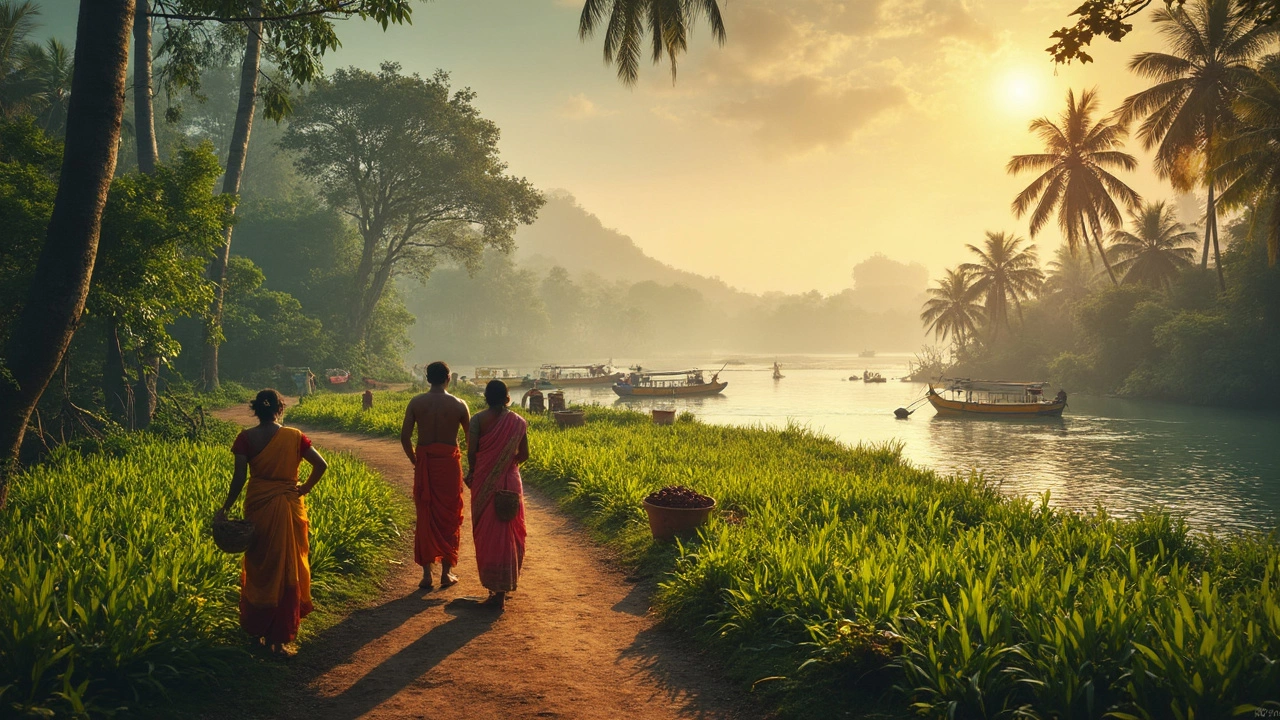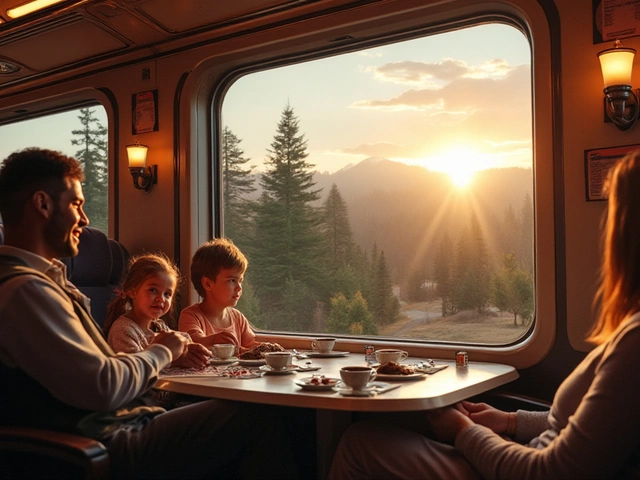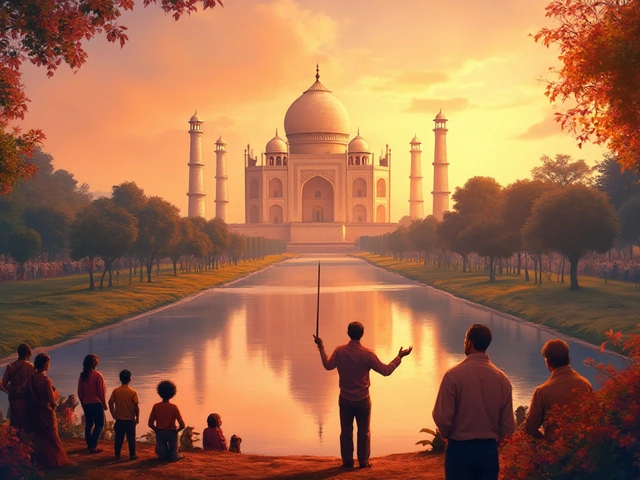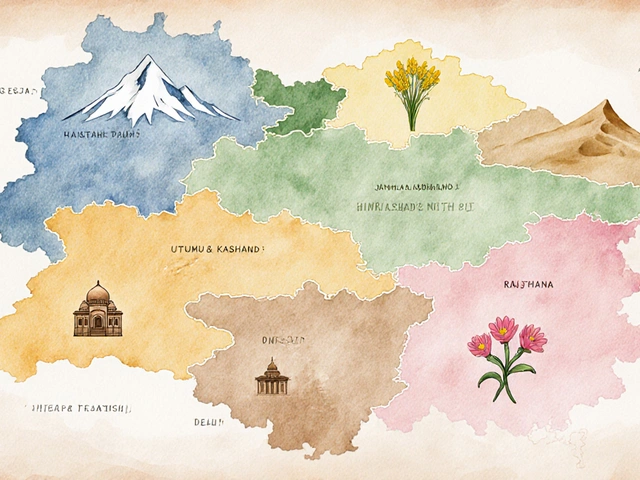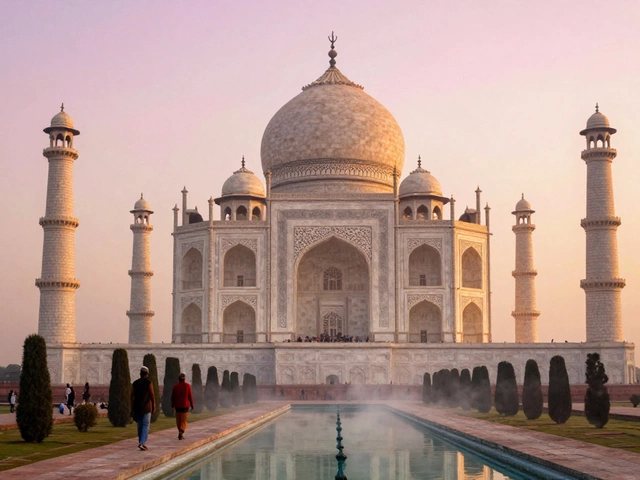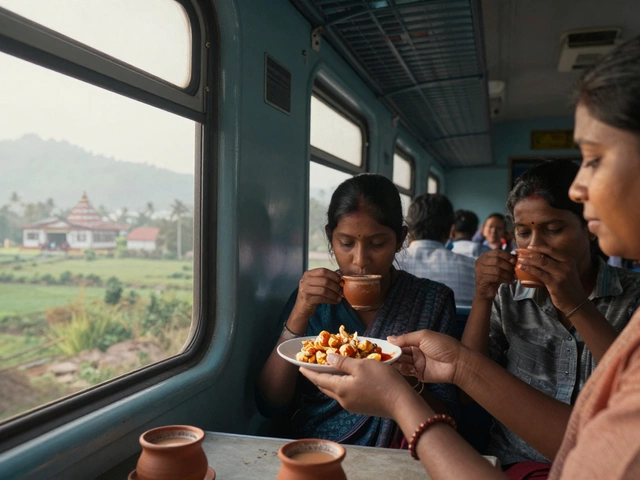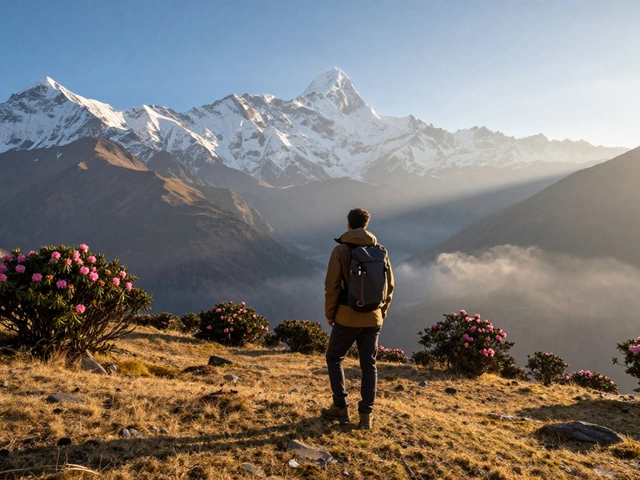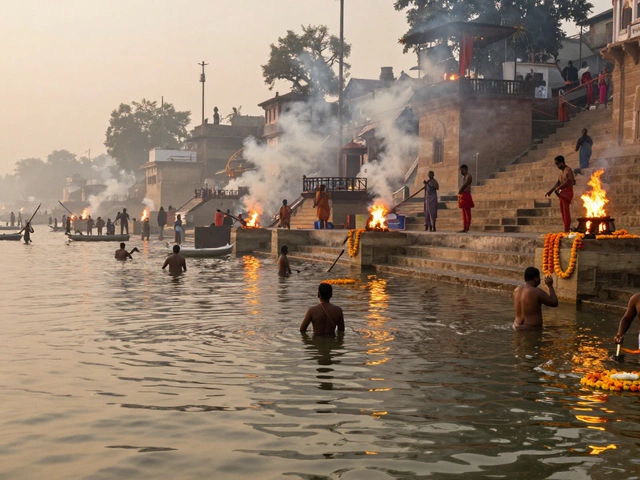Ask any traveler about the most beautiful state in India, and Kerala pops up almost every time—and not just for the pretty postcards. It isn’t just about beaches, though the sandy stretches are legendary. You get hill stations, wildlife, clean cities, waterfalls, endless green, and food that has fans coming back for more.
Now, if you’re thinking, “Is it really as great as people say?”—well, there’s a reason it’s called God’s Own Country. It’s not all hype. You’ll find a crazy mix of things to do, whether you want to chill on a houseboat in the backwaters, ride a bike through misty tea gardens, or spot wild elephants in a proper rainforest.
The best part? Kerala is easy for travelers—safe, friendly, and not stuck in old ways. Wifi is good, transport doesn’t stress you out, and locals are used to giving directions with a smile. If you’re deciding where to go in South India, it’s worth checking out what makes this state more than just a hotspot for honeymooners and foreign tourists.
- Why Kerala Tops the List
- Must-Visit Places in Kerala
- When to Visit for the Best Experience
- What to Eat and Where to Try It
- Local Tips for a Smooth Trip
Why Kerala Tops the List
If you’re looking for the most beautiful state in India, it’s hard to ignore the facts about Kerala. This place isn’t just about good looks—there’s substance behind the hype. Here’s what really sets Kerala apart from the rest of South India.
First, the landscape is wild. You get the best of both worlds: beaches along nearly 600 km of coastline and the Western Ghats mountains with cool air and rolling tea gardens. Then there are the famous backwaters—a whole network of lakes and canals where local families still commute by boat. Places like Alleppey and Kumarakom offer houseboat stays you won’t find anywhere else in India.
Nature fans will love how accessible wildlife is. You can actually spot elephants, bison, and even tigers in places like Periyar and Wayanad. Kerala is serious about eco-tourism and actually enforces rules that keep the parks and reserves clean and safe.
It’s not just the scenery—Kerala’s human touch counts, too. The state has the highest literacy rate in India, and you’ll feel it, from English signage to people happy to guide you. Public health care is decent, which is one reason the region has gotten a lot of buzz for medical tourism as well.
Cultural festivals happen all year. If you ever catch the boat races during Onam or see a Kathakali dance at a local temple, you’ll get how deeply tradition runs here. Even the food scene is strong, with everything from home-style fish curry to banana chips and chai served right by the backwaters.
Timeout did a global survey two years ago, ranking Fort Kochi as one of the coolest neighborhoods worldwide. That’s just one example—Kerala knows how to keep things fresh without losing its roots.
- Longest uninterrupted coast in South India, from Kovalam to Bekal
- Protected national parks like Eravikulam and Silent Valley
- Major hub for Ayurveda treatments and spa retreats
- Strong transport links and safe, clean public spaces
Add all this up, and it makes sense why so many travelers keep voting Kerala to the top year after year.
Must-Visit Places in Kerala
If you're shortlisting where to stop, there are a few spots in Kerala you just can’t skip. Each one gives a different vibe, and you’ll actually find something for every kind of traveler.
- Alleppey (Alappuzha): Want to check out those famous Kerala backwaters? Alleppey is ground zero for houseboat stays. Most people go for at least one night on the water, eating Kerala meals and watching villages pass by. The best time is right after the monsoon, when it’s green everywhere.
- Munnar: If you’re into cooler weather, rolling tea plantations, and a little hiking, Munnar in the Western Ghats is a win. A lot of tea you drink in India probably comes from here. Spend a morning visiting a tea factory or trek up to Echo Point and Top Station for killer views.
- Kochi (Cochin): The gateway to Kerala, Kochi is a chilled-out city where old things meet new. Don’t miss the Chinese fishing nets, Jewish Synagogue, or the cute cafes in Fort Kochi. From Kochi, you can book easy day trips or head further south.
- Varkala and Kovalam: These are the best beaches: Varkala has dramatic cliffs with shacks on the edge, while Kovalam is perfect for easy swimming and watching surfers. Varkala gets bonus points for yoga classes and Ayurvedic massages.
- Thekkady (Periyar Wildlife Sanctuary): Want to spot elephants, deer, or even tigers? Periyar is your go-to. Boat safaris here are a big deal and pretty stress-free if you’re traveling with family.
- Wayanad: For waterfalls, spice plantations, and treehouse stays, Wayanad is a bit off the obvious tourist route but so worth it. Edakkal Caves and Banasura Sagar Dam make great outings.
- Thrissur: If you can be in Kerala in May, Thrissur Pooram is an epic festival (think hundreds of elephants and fireworks). Even off-season, the temples and markets are solid for a culture fix.
To give you a snapshot, here’s how these places stack up for different trip styles:
| Place | Best For | Top Time to Visit |
|---|---|---|
| Alleppey | Backwaters, Houseboats | September – March |
| Munnar | Hill Stations, Tea | October – April |
| Kochi | History, Cafes | August – March |
| Varkala/Kovalam | Beaches, Yoga | November – March |
| Thekkady | Animals, Forests | September – March |
| Wayanad | Nature, Adventure | October – May |
| Thrissur | Festivals, Temples | April – May (for Pooram) |
Bottom line, whatever you’ve got in mind—a bit of chill out, some adventure, or digging into culture—Kerala’s got you. If you can, work at least three or four of these places into your travel plan to really get why it’s called the most beautiful state in India.

When to Visit for the Best Experience
If you're thinking about a trip, timing matters a lot in Kerala. The weather runs the show here, shaping up what you see, do, and even what you eat. Most travelers agree that December to February is the sweet spot. It’s cooler, less humid—expect daytime temperatures to hang around 28°C (that’s about 82°F), while nights can feel even fresher. This is also peak season, which means more tourists, especially at hotspots like Munnar and Alleppey, so booking hotels ahead is a smart move.
But let’s talk monsoons, because Kerala’s famous for them. June to September sees heavy rain. It’s not for those who hate getting wet, but the upside is fewer crowds, hotel deals, and landscapes that look straight out of movie scenes. Plus, if you’re into Ayurveda, this is the local pick for treatments—experts say the body absorbs oils way better when it’s moist outside.
Shoulder months like March to May can get sweaty (daytime highs around 35°C/95°F). This is off-season, so beach lovers might still enjoy Varkala or Kovalam without the heavy traffic, but hiking gets tough in the heat.
| Season | Months | Pros | Cons |
|---|---|---|---|
| Winter | Dec-Feb | Cool weather, best for sightseeing | Costlier stays, more crowds |
| Summer | Mar-May | Cheap deals, not crowded | Very hot, less outdoor fun |
| Monsoon | Jun-Sep | Lush scenery, Ayurveda, budget friendly | Lots of rain, some places may flood |
Here’s a quick checklist:
- If you want boat rides, go for December to February.
- Prefer waterfalls and photo ops? Come during or right after the monsoon, like late September or early October.
- For festivals, watch for Onam (usually August or September)—colorful, crazy, and lots of feasts.
Whatever you pick, the most beautiful state in India stays pretty all year. You just need to match your plans with the weather and your comfort zone.
What to Eat and Where to Try It
Kerala isn’t just a feast for the eyes—it’s a real treat for your taste buds too. The food scene is all about coconut, rice, spices, and super fresh seafood. If you like your meals with a kick, you’ll be happy here.
The most beautiful state in India serves up a breakfast you’ll remember: try puttu (steamed rice flour and coconut) with kadala curry (spicy black chickpeas) or soft appams (a sort of pancake) paired with mildly spiced stew. You can find these at any family-run hotel or a simple “tea shop” across the state, especially in Kochi and Thiruvananthapuram. Look for ‘BTH’ (Bharath Hotel) in Kochi if you want a classic vegetarian meal.
When lunch rolls around, most local restaurants offer a ‘sadya’—this is a traditional vegetarian feast served on a banana leaf with rice, sambar, avial (mixed veggies with coconut), and at least ten other side dishes. Sadya pops up everywhere during festival season, but you’ll also get smaller versions at messes and local hotels in Thrissur and Alappuzha. Try it at Sree Muruga Bhavan in Thrissur for a no-nonsense, flavor-packed experience.
Seafood lovers shouldn’t miss a fresh fish curry meal by the coast. Alleppey’s humble toddy shops are famous for spicy karimeen pollichathu (pearl spot fish wrapped in banana leaf and grilled). These toddy shops, like Mullapanthal near Kochi, offer a home-style lunch with dishes you won’t find in big hotels.
If you’re in towns like Kozhikode or Malappuram, hit up a local restaurant for Malabar biryani. Paragon Restaurant in Kozhikode is always packed for a reason—their biryani tastes like nothing else you’ll try in India. Grab some banana chips and sweet halwa from local bakeries as a snack for your trip.
- Always ask for mild spice if you’re not used to heat—most kitchens are happy to adjust.
- If you follow a vegetarian or vegan diet, Kerala’s got your back—most “meals” are veg by default.
- Bottled water is everywhere, but locals drink filtered water at most restaurants. Just ask if you want bottled only.
Bottom line: Wherever you stop, don’t skip the filter coffee—Kerala’s version is smooth and strong, perfect after a big meal.
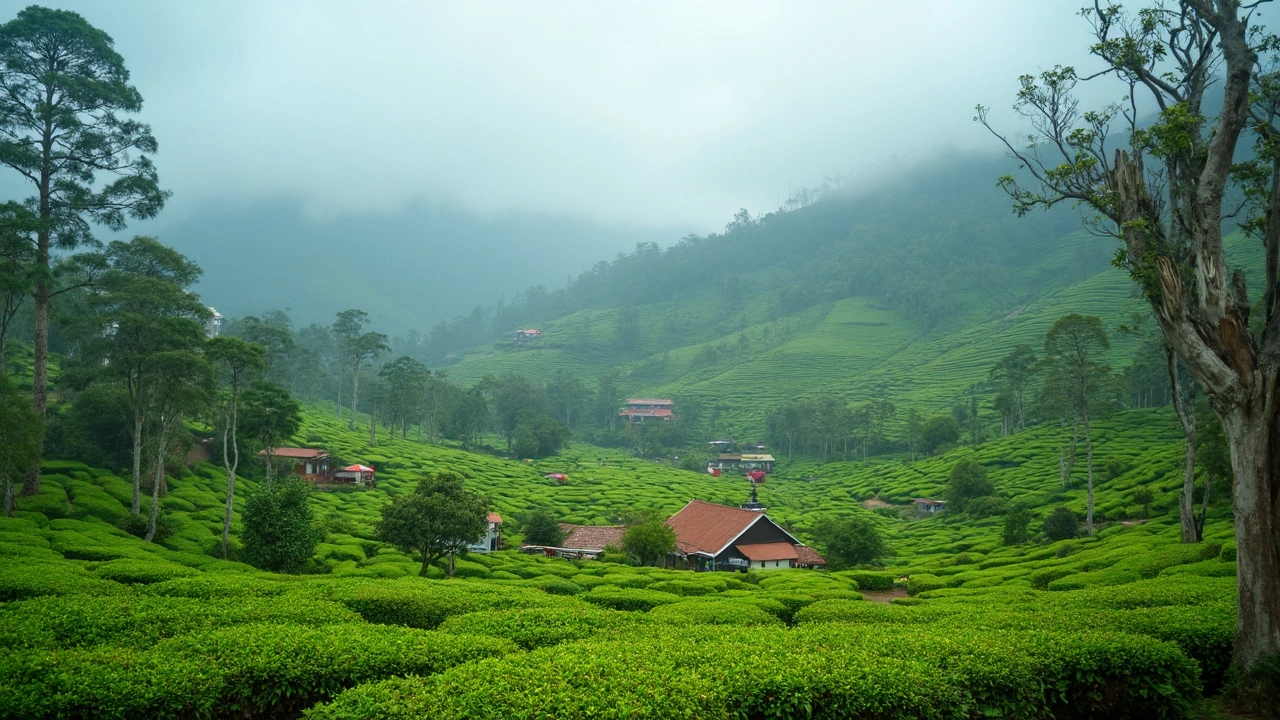
Local Tips for a Smooth Trip
If you want your Kerala adventure to go off without a hitch, don’t just wing it. Here are tips that will actually make a difference.
- Book trains and buses early: Sleeper tickets, especially for the scenic routes like Ernakulam to Trivandrum, get snapped up fast. Use the IRCTC app or trusted booking sites. Auto rickshaws are everywhere in cities—just ask for the meter or fix your price before hopping in.
- Cash still matters: Card payments are spreading, but small shops, ferries, random juice stalls—they’ll want cash. ATMs are common, but not every corner has one in the hills or tiny villages, so don't wait till you're out.
- Respect local dress codes: In temples like Guruvayur or Sabarimala, you have to follow the rules—no shoes, and traditional dress only. For the rest of Kerala, shorts and tees are fine in tourist zones but keep it modest for smaller towns.
- Don’t drink the tap water: Go for bottled or filtered water only. Stomach upsets are the last thing you want when exploring places like Munnar or Kochi.
- Get a SIM card at the airport: Coverage is solid statewide, and local SIMs are dirt cheap. Jio and Airtel work great, even in remote corners.
Want to know how long to hang around in the most beautiful state in India? Here’s a basic idea of travel times:
| Route | Distance (km) | Avg Travel Time |
|---|---|---|
| Kochi to Munnar | 130 | 4 hours |
| Kochi to Alleppey | 60 | 1.5 hours |
| Trivandrum to Kovalam | 18 | 40 minutes |
| Calicut to Wayanad | 86 | 2.5 hours |
Finally, check for local festivals—like Onam or Thrissur Pooram. During these, the whole vibe changes and public transport gets packed. If you want a calmer holiday, avoid these weeks. But if you love culture, just jump in—it’ll be the highlight of your trip.
